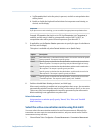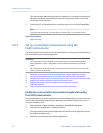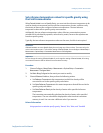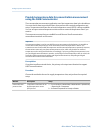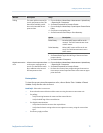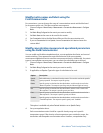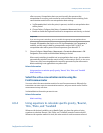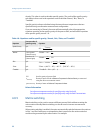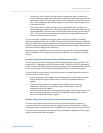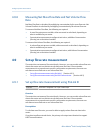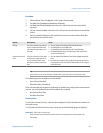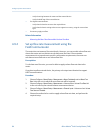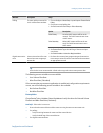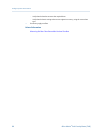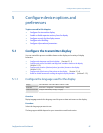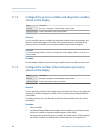
• The matrix in Slot 2 is active, the high-density extrapolation alert is enabled, and
matrix switching is enabled. Line density goes above the range of the matrix plus the
extrapolation limit. The meter posts an alert, then checks the range of the matrix in
Slot 1. No extrapolation alert would be posted, so the meter automatically switches
to the matrix in Slot 1.
• The matrix in Slot 2 is active, the high-density extrapolation alert is enabled, and
matrix switching is enabled. Line density goes above the range of the matrix plus the
extrapolation limit. The meter posts an alert, then checks the range of the matrix in
Slot 1. The current line density would also generate an extrapolation alert for this
matrix, so the meter does not switch.
You can control the conditions that trigger matrix switching by enabling or disabling
specific extrapolation alerts. For example, if the low-density and high-density extrapolation
alerts are enabled, but the low-temperature and high-temperature extrapolation alerts are
disabled, matrix switching will be triggered only by changes in line density. Changes in line
temperature will not trigger matrix switching.
Depending on your application, you may need to set up your matrices and extrapolation
limits so that there is no overlap in density and/or temperature, or so that there is slight
overlap.
Example: Using matrix switching to measure different process fluids
The line may contain either of two process fluids, depending on the current product. The
matrix in Slot 1 is appropriate for the first process fluid. The matrix in Slot 2 is appropriate
for the second process fluid. Whenever the line is switched, an extrapolation alert is posted
for the current matrix, and the meter automatically switches to use the other matrix.
To ensure that the correct matrix is used, there can be no overlap between the ranges of
the two matrices. In other words:
• If you are using density to trigger matrix switching, there can be no density values
that are within the ranges of both matrices, after the extrapolation limits are
applied.
• If you are using temperature to trigger matrix switching, there can be no
temperature values that are within the ranges of both matrices, after the
extrapolation limits are applied.
• If you are using both density and temperature to trigger matrix switching, there can
be no density or temperature values that are within the ranges of both matrices,
after the extrapolation limits are applied.
Example: Using matrix switching to increase measurement accuracy
For some process fluids, measurement accuracy is increased when the matrix has a
narrower temperature or density range. By using two matrices with adjacent or slightly
overlapping ranges, increased accuracy is available over a wider range of process variation.
To ensure continuous process measurement, there should be no gap between the ranges,
after the extrapolation limits are applied.
Configure process measurement
Configuration and Use Manual 81



